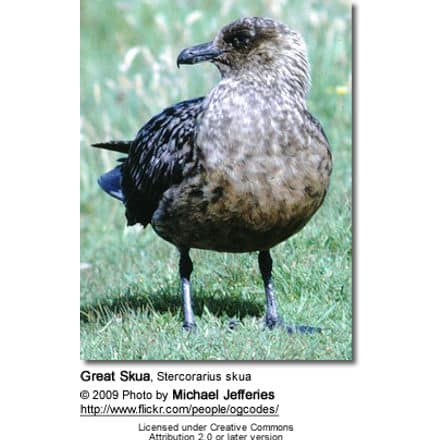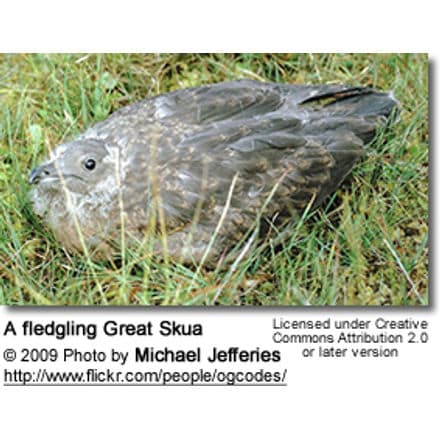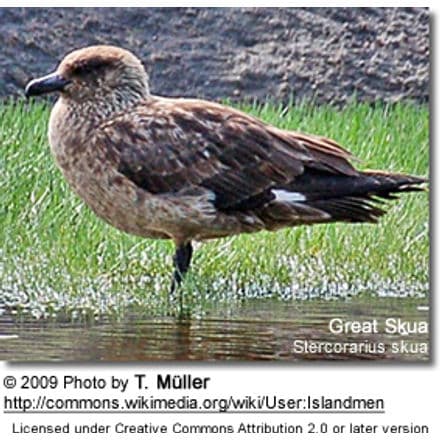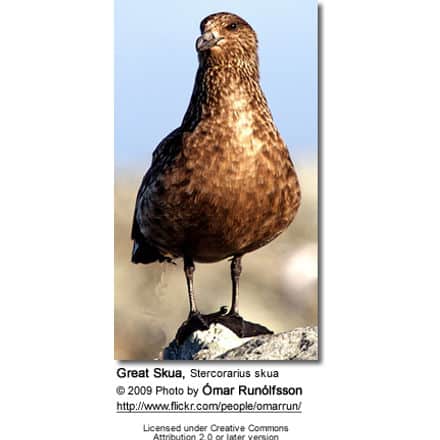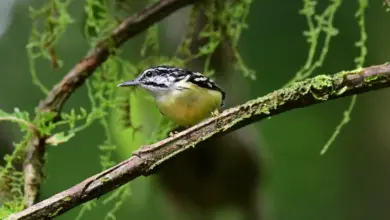Great Skuas (Stercorarius skua)
The Great Skua, Stercorarius skua, is a large seabird in the skua family Stercorariidae. In Britain, it is sometimes known by the name Bonxie, a Shetland name of unknown origin.
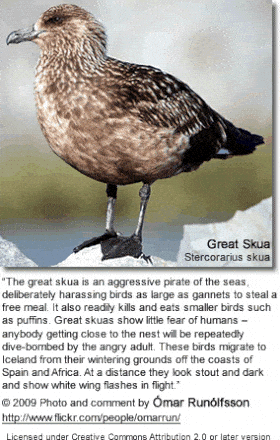
Distribution / Range
It is a migrant, wintering at sea in the Atlantic Ocean and regularly reaching North American waters.
It breeds in Iceland, Norway, the Faroe Islands and the Scottish islands, with a few on mainland Scotland.
Description:
This is a large skua 50–58cm in length with a 125–140cm wingspan.
Adults are streaked greyish brown, with a black cap, juveniles are a warmer brown and unstreaked below. Their tail is short and blunt.
The flight is direct and powerful.
Similar Species ID:
Distinguishing this skua from the other North Atlantic skuas (Arctic Skua, Pomarine Skua and Long-tailed Skua) is relatively straightforward.
The Herring Gull size, massive barrel chest and white wing flashes of this bird are distinctive even at a distance. It is sometimes said to give the impression of a Common Buzzard (which in America would be called a hawk).
Identification of this skua is only complicated when it is necessary to distinguish it from the closely related large southern-hemisphere skuas.
Calls / Vocalizations
This Skua’s call is a harsh hah-hah-hah-hah; quacking and croaking noises have also been heard.
Diet
This bird eats mainly fish, which it often obtains by robbing gulls, terns and even Northern Gannets of their catches. It will also directly attack and kill other seabirds, up to the size of Great Black-backed Gulls.
Like most other skua species, it continues this piratical behaviour throughout the year, showing less agility and more brute force than the smaller skuas when it harasses its victims.
A common technique is to fly up to a gannet in mid-air and grab it by the wing, so that it stalls and falls into the sea, where the Great Skua then physically attacks it until it surrenders its catch. It also eats offal (= entrails and internal organs of butchered animals), eggs, berries and carrion.
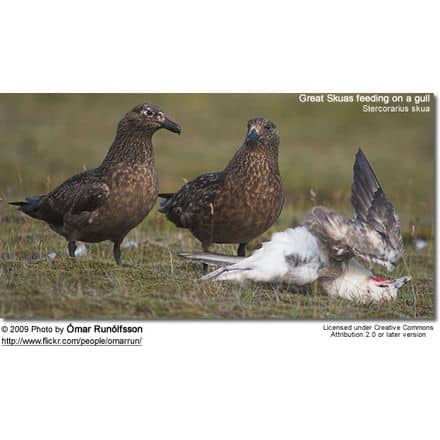
Breeding
The Great Skua breeds in Iceland, Norway, the Faroe Islands and the Scottish islands, with a few on mainland Scotland. It breeds on coastal moorland and rocky islands, usually laying two spotted olive-brown eggs in grass-lined nests.
Like other skuas, it will fly at the head of a human or other intruder approaching its nest. Although it cannot inflict serious damage, such an experience with a bird of this size is frightening. It is a migrant, wintering at sea in the Atlantic Ocean and regularly reaching North American water.
Due to its size, aggressive nature and fierce defence of its nest, the Great Skua has hardly anything to fear from other predators. While fledglings can fall prey to rats, cats or the Arctic Fox, healthy adults are only threatened by the Golden Eagle and the White-tailed Eagle.
Predation Account
Unusual behavior by St Kilda’s Skuas was recorded in 2007 during research into recent falls in the Leach’s Storm-petrel population. Using night vision gear, ecologists observed the skuas predating on the petrels at night, a remarkable strategy for a seabird.
Origins / Taxonomy
Genetic studies have found surprising similarities between the Great Skua and the Pomarine Skua, despite their dissimilar appearance. Many ornithologists now believe either that the Great Skua originated as a hybrid between the Pomarine Skua and one of the southern-hemisphere species [Furness and Hamer, 2003], presumably as a result of vagrancy or migration across the equator by the southern species, or that the Pomarine Skua evolved from hybridization of the Great Skua and one of the small Arctic species (see Pomarine Skua for details).
Some authorities still regard the Great Skua as conspecific (of, or belonging to, the same species) with some of these southern skuas, and as a group they have sometimes been separated in the genus Catharacta, although currently this is not commonly followed.
References
- BirdLife International (2004). Stercorarius skua. 2006. IUCN Red List of Threatened Species. IUCN 2006. Retrieved on 11 May 2006. Database entry includes justification for why this species is of least concern
- Furness, Robert W.; Keith Hamer (2003). “Skuas and Jaegers.”. in In Christopher Perrins (Ed.). Firefly Encyclopedia of Birds. Firefly Books. pp. 270–273. ISBN 1-55297-777-3.
- Bull, John; Farrand, Jr., John (April 1984). The Audubon Society Field Guide to North American Birds, Eastern Region. New York: Alfred A. Knopf. ISBN 0-394-41405-5.
Notes
- Haswell-Smith, Hamish. (2004) The Scottish Islands. Edinburgh. Canongate.
- “Bird night attacks may be unique” (5 November 2007) BBC News. Retrieved on 6 November 2007.
Beauty Of Birds strives to maintain accurate and up-to-date information; however, mistakes do happen. If you would like to correct or update any of the information, please contact us. THANK YOU!!!

